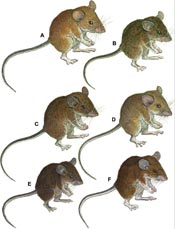
The discovery, documented by the respected Field Museum of Natural History in Chicago in its May 2011 journal, showcases the country’s vast, but threatened biodiversity, the DENR said in a statement.
The mice were found in heavily-forested mountain ranges on the main Philippine island of Luzon.
Lawrence Heaney, lead author of the 2011 journal, was quoted as saying they were “wonderful little mice that… actively avoid humans and rarely cause any harm.
“They prefer to eat earthworms and seeds on the forest floor.”
The date of the expedition was not disclosed. Scientists from Philippine and US universities and museums took part, the department said.
The department warned the habitats of many of the new species were not protected areas, making them vulnerable to logging and illegal mining.
Environment Secretary Ramon Paje said the new discoveries were further proof that the Philippines, an archipelago of more than 7,000 islands, had some of the greatest diversity in animal and plant species in the world.
The Philippines also had the greatest rates of discoveries of new species, he said in the statement.
Earlier this month, a joint Philippine-American scientific expedition announced that in its exploration in May it had found possibly scores of new species.
They included a new variety of shark, new species of eels, insects, sea slugs and sea urchins although further study is needed to confirm if they are really new to science.